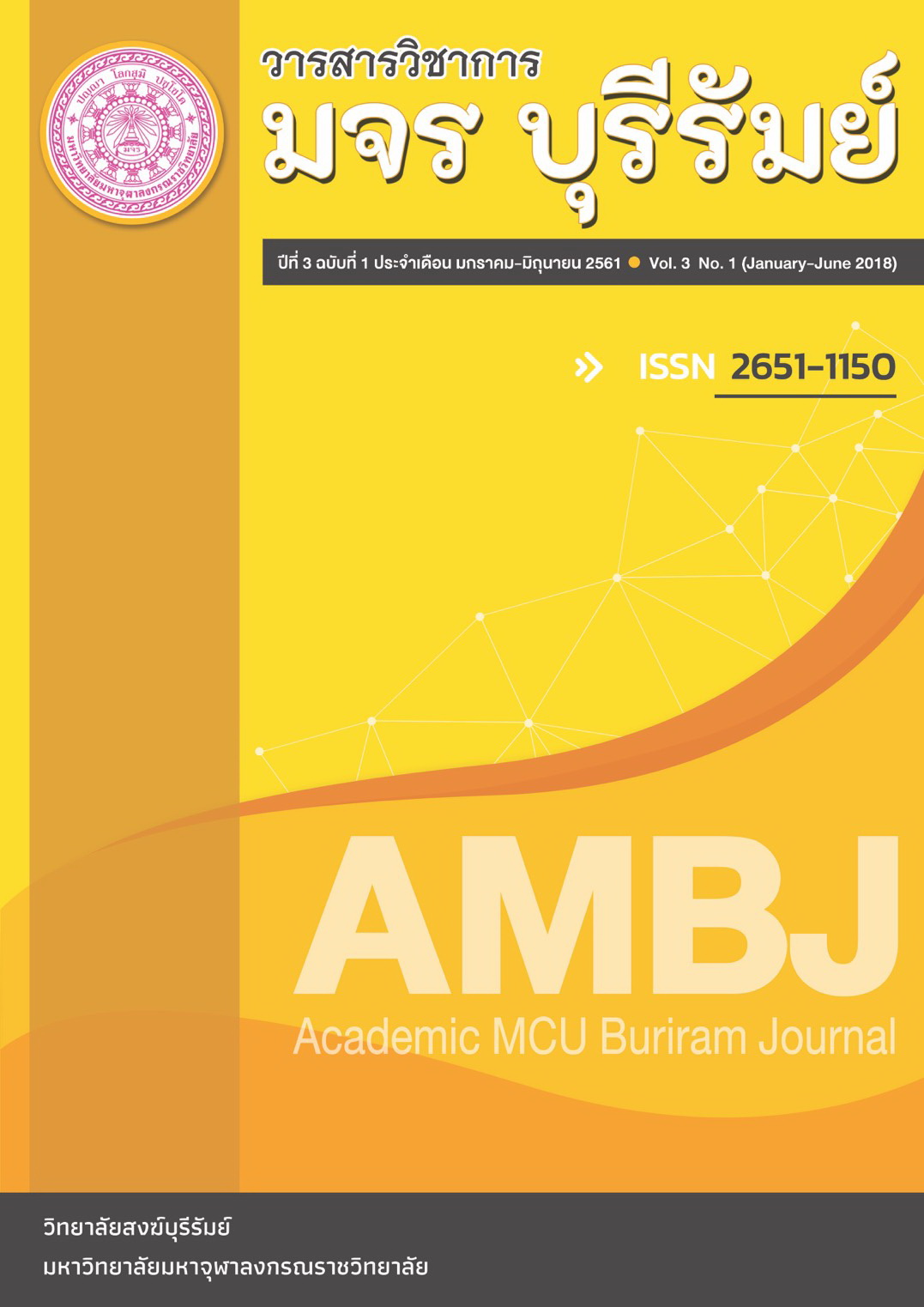Kantongdar: A Spiritual Sign of the Buddhist Khmer Ancestors in Surin
Keywords:
Sath Festival, Ancestors, Surin KhmerAbstract
The objective of this article is to study the local wisdom of Thai Buddhist Khmer in Surin province, particularly in the offerings dedicated to the deceased’s ceremony during the tenth month Sath festival (Saen Don Tar) of Surin Province. Especially, “Kantongdar” is known as the sign of the offerings dedicated to the deceased’s ceremony (Dakkhinanupdana) through integration between the main Buddhist knowledge, known as the Tipitaka, and modern sciences which would be the sources of analytical study. An Author has been analyzing the value of Kantongdar’s meaning into 10 meanings in which concealed in this sign and to be summarized as followed; 1) a sign of gratitude, 2) a sign of unity in the relationship, 3) a sign of tradition between the living and the dead, 4) a sign of Kamma and rebirth , 5) a sign of generosity, 6) a sign of fruitfulness, 7) a sign social organization in Buddhism, 8) a sign of offering dedicated to the Sangha’s ceremony (Mahasanghadana), 9) a sign of the Buddhist cultural communication, and 10) a sign of spiritual ancestors. Therefore, Kantogndar is known as the sign of integration between the power of faith and spiritual ancestors. It is a strategy blended by sight in the spiritual dimension and developed into the cultural heritage of Buddhist Khmer Surin eventually.
Downloads
Published
How to Cite
Issue
Section
License
ทัศนะและความคิดเห็นที่ปรากฏในบทความวารสารฉบับนี้ถือเป็นความรับผิดชอบของผู้เขียนบทความนั้น ไม่ถือเป็นทัศนะและความรับผิดชอบของบรรณาธิการ





